Electrode Machining Set Free
These two shops used to mill EDM electrodes on their metal cutting machines, but they have now shifted the work to graphite machining centers. Both shops say the advantage isn’t just in the cycle time savings, it’s in the inefficiencies they can now overcome.
Share





Machining graphite electrodes effectively demands a fast spindle, a fast control . . . and dust collection. Requirements like these make it easy to see why graphite electrode milling is one of the few jobs that has machining centers designed specifically for it.
But most EDM shops don’t use these machines. Instead, a more typical mold shop produces electrodes using a general-purpose machining center—perhaps one the shop also uses to cut metal. And the existing machine may seem to do the job quite well. The shop may only vaguely look forward to the day when it sees enough ram EDM work to justify a faster, cleaner machine that’s dedicated to electrode milling.
However, that day may be closer than anyone in the shop realizes. Even a small mold shop may have enough EDM work today to justify the cost of such a machine—including any additional expenses in tooling and programming capability needed to make good use of it.
Here’s why. The most significant payback from an efficient graphite machining center is not likely to come directly from machining time savings for electrodes, or even from the combination of machining time savings plus savings in benchwork time.
Instead, far greater payback may come from the overall efficiency improvements that result from relocating the job of electrode milling to a faster, dedicated machine. Accomplish this, and electrode machining no longer has to be beholden to the metal cutting work schedule. A precise, high speed electrode machining center can let the shop mill electrodes—even redress electrodes—on an as-needed basis.
In addition, placing a dedicated machine for electrode milling near the EDM machine can let one person oversee both milling the electrode and putting it to work in EDM. Keeping the job continuously in one person’s control reduces the chance for error.
These benefits of a graphite machining center are more difficult to quantify than reduced cycle time. However, given the sum of these savings, such a machine can pay its own way even if it is only cutting for one to four hours out of every 24.
Two companies can testify to this. Both recently shifted electrode production to their first graphite machining centers. Neither company is a large mold maker.
One is Micropulse Incorporated (Columbia City, Indiana), which purchased its graphite machining center to support three ram EDM machines.
Meanwhile, Burger Engineering (Olathe, Kansas) justified its graphite machining center to support just one ram EDM machine.
For both of these companies, one to four hours per day aptly describes the amount of uptime the graphite machining centers see. As it happens, neither shop can prepare work for its machine any faster. That’s because the graphite machining centers change the rules that govern EDM workflow. In the past, the limiting factor for both shops’ EDM areas—the factor that determined how quickly EDM work could be carried out—was how quickly electrodes could be machined. But now, with electrode milling cycles measured in minutes instead of hours, electrode machining time is no longer the limiting factor. Instead, the limit today is the speed at which electrode milling tool paths can be created.
Accordingly, both shops have increased their programming capacity. Burger Engineering brought a programmer closer to the machine tool. Micropulse also did this. However, this shop filled the slot by hiring an additional programmer.
A Mill Of Its Own
Micropulse’s graphite machining center was supplied by Bostomatic (formerly Boston Digital; Milford, Massachusetts). The machine features a 30,000 rpm spindle and a CNC-based compensation system that maintains accuracy by adjusting for thermal effects. The processing speed of the CNC—far faster than that of any other CNC in the shop—is easily fast enough to let the shop finish-machine complex features to narrow tolerances at high feed rates. Electrodes that would have taken three hours to machine the old way take about 15 minutes on the new machine, says company president Brian Emerick.
At just about the same time this new machine started working for the shop, so did Gary Sims, the shop’s newest programmer. But unlike other programmers in the company, Mr. Sims is a part of the EDM area. He programs tool paths for electrodes, the most geometrically complex milled parts the shop produces.
Micropulse’s machine shop is divided into various areas. They include a ram EDM area with the three die sinker machines and a milling and turning area. (Other areas are wire EDM and grinding.) These areas serve the company’s various business interests, which include mold making, building progressive stamping dies, contract production machining, and building special machines. Sharing machine tools across this diverse range of applications works well for the company, because the system leaves room for one business segment to wax while another one wanes, without affecting machine utilization. However, electrode milling is perhaps the one job for which this general-purpose approach to machining capacity has not served the company well. Previously, the company’s milling and turning area—including this area’s own programmers—was tasked with producing the electrodes the EDM area needed. However, the difficulty scheduling these long, complex jobs around runs of less complex production parts, combined with communication delays between these different areas of the shop, often resulted in time being lost that was far greater than the difference in machining time between a high speed and conventional machine.
Perhaps the witness best able to compare then-versus-now is Mike Neuenschwander. He has been manager of the EDM area since well before the graphite machining center arrived. He describes the shop’s previous process for producing electrodes and the opportunities for delay this process created.
“The electrode would get a router like any production job,” he says. “It would then wait in the queue until there was open time to run it. But when the opportunity to machine the electrode did come, maybe the operator would need to ask me a question. He didn’t know how the electrode would be used at the EDM, and I did. So he would try to find me, and if I didn’t happen to be available at that moment, then that would lead to another delay.”
The result was an all-too-common irony. The shop sometimes farmed out EDM jobs even while its three ram EDM machines sat idle. The shop just couldn’t produce the electrodes it needed fast enough to run these jobs itself.
And as for the jobs that were run, the shop sometimes had to choose expediency over accuracy or efficiency. To hurry a job along, the shop would sometimes break the electrode geometry into a series simpler shapes that could be run more quickly on various machines. However, this meant multiple burns at the EDM, and more opportunities for error resulting from increased handling of the electrode job.
In fact, when the electrode geometry permitted it, Mr. Neuenschwander would sometimes machine simple electrodes himself on a grinder, instead of waiting for them to be machined via the shop’s traditional process. Thus, the grinder near the EDM area was a predecessor to the graphite machining center that serves the EDM area now.
Simply buying another general-purpose machining center for the EDM area’s use might have overcome some of these scheduling and coordination delays. However, this solution would not have delivered all of the benefits the shop has realized from a machining center designed for graphite milling. The speed is also important. Achieving short cycle times eliminates the need to do much in the way of scheduling this machining center’s time, thereby allowing electrodes to be machined essentially on a just-in-time basis.
Quality In Motion
Milling electrodes on a slower machining center with a slower CNC used to force Micropulse’s programmers to make hard decisions with regard to an electrode’s accuracy and smoothness. The programmer could achieve smoother contours at the machining center by choosing a finer chordal tolerance in the CAM software. A finer chordal tolerance would increase the number of program blocks used to define a curve. However, increase the number of program blocks too much, and the programmed feed rate would have to be slowed. Otherwise, the machine would stutter from the CNC’s inability to keep up.
By contrast, the graphite machining center eliminates the need to make the hard decision. The machine’s high speed CNC is easily fast enough to accommodate the finest chordal tolerances the shop might use, even at relatively high feed rates.
Step-over increments tell a similar story. According to programmer Gary Sims, on the older machines, the difference between choosing a step-over of 0.005 inch and one of 0.003 inch could be an additional seven hours of machining time. But now, he routinely eliminates the need to hand finish electrodes by choosing step-over increments on the high speed machine that are even smaller than these values. Choosing a finer increment does nothing more than add minutes to the cycle on this machine—which is not enough to have any noticeable impact on the overall progress of the job.
With the addition of the graphite machining center—combined with Mr. Sims to program jobs for it—the shop has effectively increased its EDM capacity. Gone are the days when EDM machines would sit idle for lack of electrodes.
In fact, the converse is now true. Micropulse now has a surplus of electrode machining capacity. But it also has found a use for at least some of the surplus. The Indiana-based company has a small satellite facility in Arizona, and this shop is prone to electrode shortages of its own. Now, the western shop has taken to calling on the eastern shop for help. In these cases, the Arizona facility sends its geometry to Indiana, and Indiana sends back an electrode via Fedex.
Lone EDM
A shop with only one EDM machine to support, and therefore a more difficult case to make when it came to justifying the graphite machining center, is the Kansas-based Burger Engineering. Burger is also a hybrid shop engaged in contract mold making and production machining both. On the mold making side, the company emphasizes a particular type of work. Burger sees its expertise at making molds for overmolding as being perhaps its most significant competitive advantage.
The machine this shop chose comes from Defiance Innovations (St. Louis, Missouri). Burger’s model has a 40,000 rpm spindle. The standard CNC on the machine comes from Creative Technology (Arlington Heights, Illinois). A feature of particular importance to the shop is the CNC’s look-ahead functionality. Thanks to this feature, and also to the faster processing speed, the shop has been able to increase its electrode milling feed rates to the same extent that it has increased spindle speed. Typical programmed parameters for finish milling used to be 3,500 rpm and 30 ipm. Finish cuts now are run at 35,000 rpm and 400 ipm.
Before adding the graphite machining center to its process, Burger relied on a metal cutting machining center in its production area to perform electrode machining work. The delay and inefficiency resulting from the need to schedule long machining cycles on this slower machine, and from the need for separate areas of the shop to coordinate with one another, were all similar enough to what Micropulse experienced that there is no need to repeat the story here. But in the case of Burger Engineering, these problems were compounded by concerns for the health of the metal cutting machine. Burger favors higher-end CNC equipment, and any add-on vacuum system the shop tried for one of these machines at best only kept some of the dust contained. Says company vice president Mark Brown, “It was hard to watch dust get into the ways of a $100,000 machine.”
The potential for productivity improvement that a dedicated, high speed graphite machining center could offer the shop was demonstrated via the test part shown on page 95. This electrode—for an actual customer job—had taken just under five hours to mill on the conventional machining center. But the graphite machining center the shop ultimately bought ran the same job, using the same tool paths, in 40 minutes.
However, the same milled form was then defined using tool paths tailored to high speed machining. For example, instead of milling the form using back-and-forth parallel tool paths, the new tool paths attacked the form one feature at a time, surrounding each feature with more fluid concentric motions that didn’t require the machine to make so many complete reversals of direction. (The shop’s CAM software has long offered the option of defining tool paths in this way, but the shop never had much need to employ the feature before.) Making these adjustments to the way the machine milled reduced machining time from 40 minutes to 30.
Soon after the shop bought the fast machine, it became apparent that keeping it supplied with work would be a challenge. But Burger did not add staff. Instead, the shop installed a PC for CAD/CAM work on the shop floor in order to let existing personnel work more efficiently.
The graphite machining center itself helped make this possible. Since well before this machine came, one employee—named Steve Briar—has been primarily responsible for generating programs for electrode milling. He also mans the EDM machine. And in the past, this combination of duties has had him walking frequently back and forth between the shop and the office. But the graphite machining center, with its integral dust collection system, now captures the graphite dust so thoroughly that a CAD/CAM PC can be placed near the machine without subjecting it to contamination. As a result, the machining center, die sinker, and programming PC now sit in a line on the shop floor, and Mr. Briar frequently has both machine tools running while he programs tool paths for the electrode to be milled next. Thus, the time Mr. Briar used to spend on his feet has now been transformed into additional programming capacity.
Redress Addressed—And Other Bonuses
One key to allowing a single person to keep both machines running in this way is an electrode holding system that is shared by the EDM machine and the graphite machining center both. Erowa (Arlington Heights, Illinois) supplied the shop with this system, which was developed specifically for shops like Burger that both machine and employ EDM electrodes. (Micropulse uses the system, too.) Fundamental to the system are clamping blocks that move with the electrode from machining center to EDM machine, and lock into place at each machine using compatible hardware already installed there. Thus, by virtue of these clamping blocks, the workholding on one machine becomes the toolholding on the next. And because the electrode doesn’t have to be unclamped, its position at the EDM machine is precisely established as soon as the block holding the electrode is locked in place.
The system saves time by streamlining setups. However, the system also saves the shop graphite, because redressing used electrodes is now so easy.
By contrast, redressing used to be a practical impossibility. Given the difficultly scheduling open time on the production machining center for graphite milling, the shop generally took advantage of any time available by milling all of the electrodes from scratch that a job might require. For example, if four electrodes might be needed for a given job, then four original electrodes would be machined in one long batch cycle (perhaps 20 hours at the machining center), with no allowance made for the possibility that one of the electrodes in that batch might be redressed and re-used in place of one of the others. Redressing would entail scheduling yet another window of open time on the production machining center while the job was in-work on the EDM machine. Given the coordination difficulty this would entail, there was generally no point in considering redressing.
Now, redressing is much easier to consider. Not only are machining cycles fast on the graphite machining center, but the workholding system eliminates the need to re-measure a workpiece’s position when the same part is returned to the machine (so long as the electrode has not left the clamping block).
As a result, the shop has gotten used to redressing electrodes whenever possible. This change accounts for a savings of about 30 percent in the rate at which the shop purchases graphite.
The savings is one example of a side benefit the shop realized from the graphite machining center. Another such example, says Mr. Briar, is that small tools break far less often. Faster machining lets the shop take lighter cuts effectively. As a result, Mr. Briar no longer feels pressured to save on cycle time by having a small tool take a heavier cut than perhaps it can handle.
There are other important advantages. The company now has increased capacity on both sides of the shop. On the moldmaking side, keeping the EDM machine well-supplied with electrodes has enabled the shop to take on more work. And on the production machining side, all of the capacity that used to be devoted to machining electrodes has now opened up, allowing that side of the shop to take on more work, too.
In addition, the graphite machining center is giving the shop its first experience with high speed machining. And in the end, this may prove to be the most significant benefit of all. Further experimentation with high speed machining is high among the shop’s priorities. Likely the next machining center the company purchases will be one that lets the shop apply some of these techniques to steel, says vice president Mark Brown.
In fact, he is surprised the experimentation has not already begun. Tongue in cheek, he admits, “I’m a little disappointed that one of our operators hasn’t tried to run steel on that machine while I wasn’t looking.”MMS
Read Next
5 Rules of Thumb for Buying CNC Machine Tools
Use these tips to carefully plan your machine tool purchases and to avoid regretting your decision later.
Read MoreBuilding Out a Foundation for Student Machinists
Autodesk and Haas have teamed up to produce an introductory course for students that covers the basics of CAD, CAM and CNC while providing them with a portfolio part.
Read MoreSetting Up the Building Blocks for a Digital Factory
Woodward Inc. spent over a year developing an API to connect machines to its digital factory. Caron Engineering’s MiConnect has cut most of this process while also granting the shop greater access to machine information.
Read More












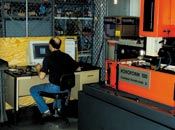
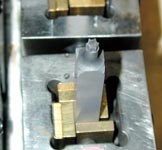
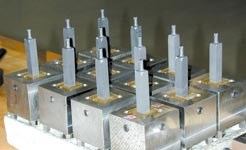
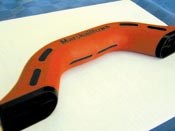
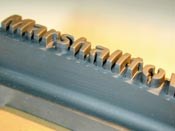
.jpg;width=860)
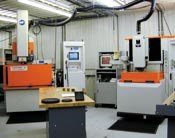
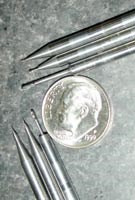

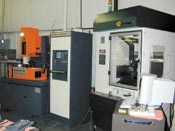
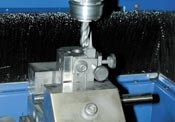
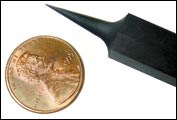













.jpg;maxWidth=300;quality=90)







